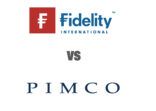The average three-year cumulative return of 45 SFC authorised funds comprising the renminbi fixed income sector is only 2.58% in US dollar terms, compared with a 6.75% return by the Bloomberg Barclays Global Aggregate index.
Yet, according to a recent Bloomberg survey of 180 Hong Kong and Singapore market participants, more than two-thirds plan to increase their allocations to Chinese onshore bonds. The top reason given was the inclusion of RMB-denominated government and policy bank debt securities in the Global Aggregate index beginning in April.
Some respondents also pointed to portfolio diversification as a compelling motivation for raising allocations.
However, the best returns have been achieved by funds with allocations to US dollar-denominated Chinese offshore bonds, notably the Income Partners Managed Volatility High Yield Bond Fund and the BOCHK All Weather China High Yield Bond Fund.
The worst performing funds are those predominantly invested in onshore renminbi bonds. Wide currency fluctuations would have contributed to their volatility, especially in early 2017 and November 2018 when the USD/CNY exchange rate approached 7.
But, the net decline in the renminbi during the past three years is 2.24%, so currency weakness fails to account for the negative returns of renminbi bond invested funds.
Expanding market
Instead, a rapid increase in new issuance supply and deteriorating credit quality as the Chinese economy slowed is likely to have been a factor.
“Easing policies launched by the Chinese government led to strong growth in new bond issuance by companies at lower funding costs in the second half of 2018, especially in the fourth quarter, “ according to a January report by Moody’s Investors Services.
Meanwhile, “public bond defaults continued, indicating regulators’ tolerance of isolated default cases that do not trigger systemic risks”.
China’s onshore bond market is now the third largest bond market by outstanding amount globally, according to a recent S&P Global Report. New issuance last year topped $3.5bn, compared with less than $800m in 2014 – and scarcely any in the first decade of the 2000s.
Most of the outstanding issues in China’s bond market are from financial institutions, accounting for $4.9trn of the $13trn total.
However, investments by international investors account for less than 2% of the onshore market.
The Chinese authorities have opened the onshore interbank bond market to international investors in recent years, notably with CIBM China Interbank Bond Market (CIBM) Direct in 2016 and, a year later with Bond Connect, the mutual bond market access scheme between Hong Kong and mainland China.
“We believe international investors will gradually increase their fund allocations to onshore corporate bonds as more global bond indexes include or increase their index composition of China’s onshore bonds,” said Moody’s.
ICBC International is especially bullish, predicting foreigners will own 15% of the onshore bond market in five years.
Performance of SFC Authorised RMB Funds
| Fund |
3-year cumulative return % |
Annualised volatility % |
Positive weeks |
Negative weeks |
| Income Partners Managed Volatility High Yield Bond |
23.23 |
5.37 |
90 |
66 |
| BOCHK All Weather China High Yield Bond |
21.03 |
4.77 |
86 |
62 |
| HFT China RMB Fixed Income |
16.65 |
7.90 |
80 |
72 |
| Sector Average |
2.58 |
4.00 |
77 |
79 |
| Bloomberg Barclays Global Aggregate Index |
6.75 |
4.93 |
84 |
72 |
| GF China RMB Fixed Income |
-13.20 |
6.56 |
65 |
87 |
| CMS China Opportunities Flexi |
-8.56 |
8.29 |
65 |
87 |
| Harvest RMB Fixed Income |
-7.45 |
5.57 |
70 |
82 |
Source: FE Analytics. 26 Feb 2016 – 27 Feb 2019 in US dollars.
Comparative performance of RMB Funds vs Bloomberg Barclays Global Aggregate Index


















